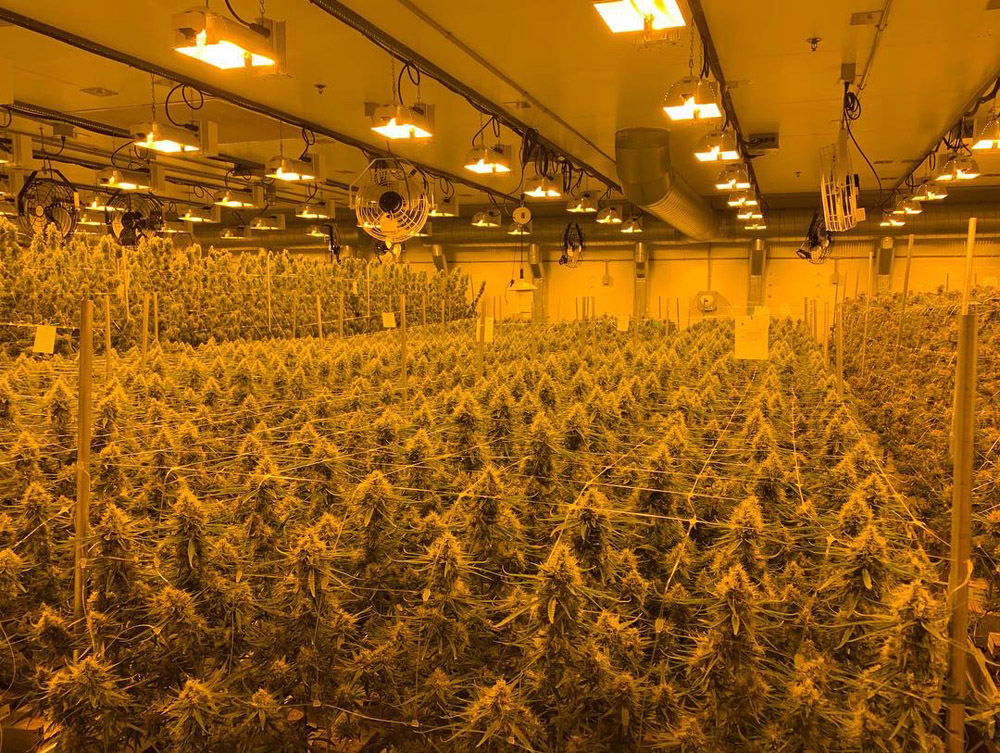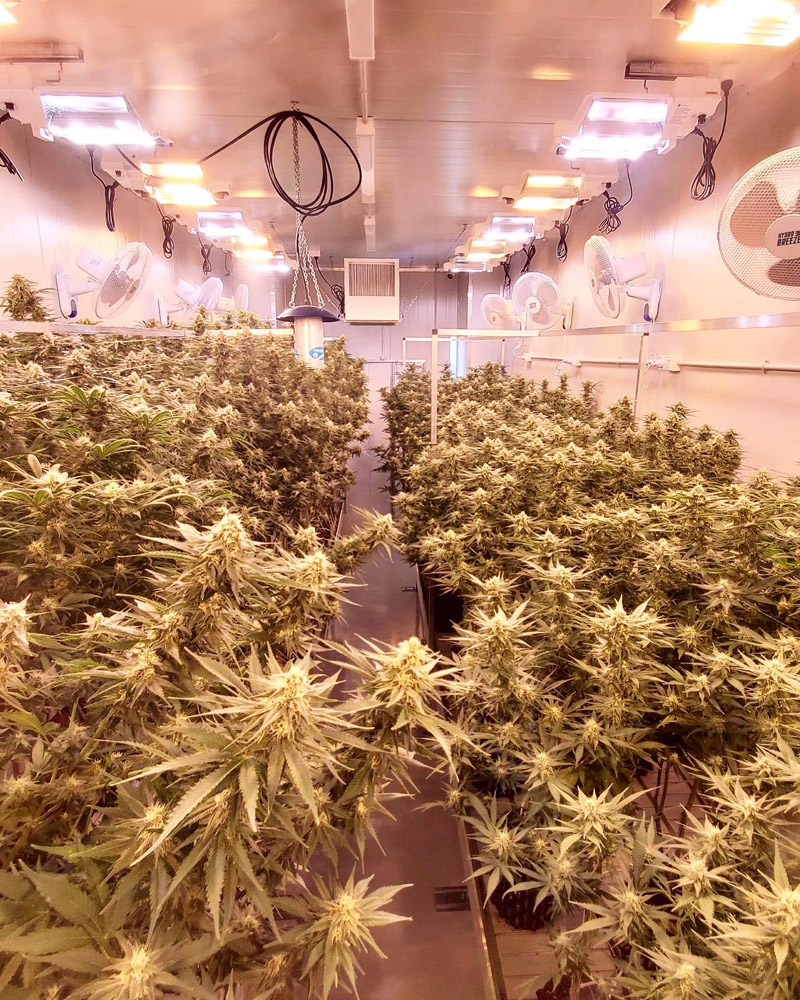Fergus Strickland
Rolling Stone Australia investigates the present and future place of cannabis in Australia.
This article is sponsored by Sydney Vaporizers
On a recent trip to the UK, I was stunned to see how far the British cannabis economy has grown in the three and a half years since I last visited.
Once a pernicious weed, and still the motivation for the racially biassed stop-and-search practices of UK law enforcement, cannabis has become something of a supplementary staple.
In high-street pharmacies up and down the country as well as boutique specialty stores in London’s Soho, CBD products are being sold over the counter, sans prescription, for the treatment of everything from anxiety to wrinkles. Pet owners are buying doggy CBD oil for their stressed out pooches and transdermal skin patches are being flogged for all-day, slow-release relaxation.
Granted, this is still quite a limited market, and a long way from the open-market free for all in Amsterdam and the sun drenched California-sober haze of Los Angeles, but still, if you value individual liberty and the growing body of scientific evidence for the benefits of bud, it’s progress.
The same can’t be said of the land down under. In Australia, cannabis has undergone something of a quiet revolution over the past few years, but for many, change can’t come quick enough.

Image Credit: Tom Forrest
Where We’re At
Since medicinal use of the plant was legalised in 2016, state and territory governments have been working out exactly how to regulate this new legal reality, undergoing long and arduous back-and-fourths with the Office for Drug Control, The Department of Health, and Australia’s medicines regulator, the Therapeutic Good Administration.
Love Music?
Get your daily dose of everything happening in Australian/New Zealand music and globally.
The result has been a somewhat strained approach whereby cannabis is now widely available in many forms for the treatment of virtually any health issue that a doctor can justify – at potentially prohibitive costs. Access to cannabis in Australia is complex and fraught with paperwork, doctors appointments, and potentially life-quality limiting penalties, including surrendering the right to drive.
On the other side of the legal fence, you’ve got recreational use, which has always been something the authorities have taken a dim view of. While penalised heavily in most states, there is some leniency in places like NSW and VIC where cautions can be issued for simple possession, although harsh penalties still abound for personal growers and consequences for individuals are often at the discretion of the officers involved.
Recreational use however scored a big win earlier this year when the ACT decided to decriminalise the personal use of all drugs. Cannabis itself has been decriminalised since 2020. The changes opened up personal home-grow operations in the ACT, where the model appears to be highly successful. In the first year, cannabis offences dropped by 90% while use of the drug remained the same.
Legislation is currently, as it so often is, making its way through a number of parliaments in the country – notably NSW and South Australia – to soften cannabis laws from driving to possession, although the chances of these proposed bills passing is negligible. Similar proposals have been nipped in the bud in recent years, including in Tasmania, Western Australia, and Victoria.

Image Credit: Tom Forrest
Where to Next for Cannabis
Some of the biggest current issues for cannabis in Australia include the availability of products, the implications for driving, and the murky future of decriminalisation.
Cannabis products, as unregistered medicines with the Therapeutic Goods Administration, can be prescribed as flower, oil, pills, and sprays. While a 2020 study found that 72% of medicinal cannabis users were taking their medication orally via liquids, a key trend over the past few years has been the swing towards using dried flower. Analysis of TGA data has shown that from 2020, prescriptions for dried flower have skyrocketed.
Flower, what you’d most likely recognise as cannabis if someone was to mention it, is intended only to be used in a dry herb weed vape when prescribed. This removes a lot of the carcinogens associated with smoking cannabis and has a quicker delivery time. Analysis has found that vaporizing is one of the most popular ways that patients consume medicinal cannabis.
Tom Forrest, Co-Founder of the Aotearoan cannabis company Puro NZ, tells Rolling Stone that “key trends locally are still towards high potency THC flower prescriptions.” Interestingly, according to the above data, it’s younger people who appear to be driving this trend. While medicinal cannabis has been largely dominated by older patients seeking relief from chronic pain, younger people wanting novel treatments for mental health concerns is becoming a huge part of the domestic market.
In that, they want high quality products at cheap prices. On the price front, medicinal cannabis still remains expensive. Recent reports suggest the average spend on medicinal cannabis is just under $300 per month and while there is some downward pressure on the market, these prices aren’t going to change dramatically any time soon.
In part, that’s to do with the high quality standards that the TGA rightfully impose on medicinal cannabis in Australia and the associated costs in reaching them. It’s also because, although more domestic producers are popping up each year, much of what we use here is imported.

Image Credit: Tom Forrest
One lawyer we spoke with who specialises in Australian cannabis law for manufacturers said that the primary focus of many of their clients is on producing higher quality products and less so on reducing costs for patients.
Forrest also sees the market “beginning to discern with novel terpene profiles in their potency and distributor purchasing”. This means patients are being given more information and choice in what they consume, with producers focusing on improving their flavour and refining their effect.
Vaporizer cartridges, pre-loaded with ready-to-vape cannabis liquid, are also making their way into the hands of Australian patients. These are different to the dry herb vapes, like the popular mighty vaporizer, arizer solo 2, and pax 3, which don’t require a herb grinder or other paraphernalia. Instead, they can be used much like a disposable vape you get at a corner shop, only filled with cannabinoids instead of nicotine. Based on overseas trends, Forrest argues that “there will be a strong uptake for this delivery method.”
While the medicinal market matures, the prescription free over the counter model may well be stagnating. Early last year, the TGA re-scheduled CBD products, allowing low-doses of them to be sold in pharmacies without a prescription.
However, Schedule 3 products, as they now are, need to be registered with the TGA and have the necessary clinical studies showing their effectiveness at treating certain conditions in order to do so.
With the dosage set at less than 150mg per day to qualify for this category, it’s unclear if any conditions will be undeniably shown to be treatable with such small quantities of the drug. Therefore, we might be in a bit of a legal dead end unless changes can be made or very expensive research can come good.
However, this might not necessarily be a bad thing, as other countries where CBD can be bought over the counter do have issues with quality and quantity of the intended product. This is something that the TGA hopes to solve, but their approach risks hamstringing the market entirely.
From a broader perspective, it seems like cannabis reform isn’t a priority for our governments right now. In June, Mark McGowan vowed to use his party’s majority in the WA Parliament to oppose the Legalise Cannabis Party’s reform legislation if it was submitted. In Victoria, the Andrews government watered down and then rejected the recommendations of a report it commissioned into cannabis reform in the state in 2021.
Currently, legislation tabled by Greens MP Cate Faerhmann in NSW Parliament has been languishing since it was submitted in 2021, with no date set for a hearing despite assurances it would be discussed this year. Similar legislation also proposed by Faerhmann to protect the driving rights of medicinal cannabis users is set to be opposed by the NSW government.
This pushback from pollies doesn’t chime with the national sentiment. The latest Australian Institute of Health and Welfare data has found that, on average, 40% of Australians support the full legalisation of cannabis. This rises to 60% in metropolitan areas like Sydney and Melbourne. Smoking cannabis is now more socially acceptable than smoking tobacco, according to the survey.
In spite of popular support, the stagnation of reform risks leaving Australia behind in the global conversation when it comes to having a mature understanding of cannabis and the way that people use the plant, with or without legal blessing.



































